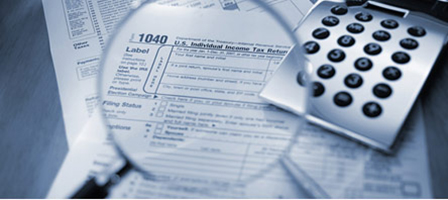ENERGY COSTS RISE AS TAX INCENTIVES FADE
With energy costs skyrocketing, you would think that the federal government would come up with some tax incentives aimed at curbing the consumption of energy. However, on the consumer end of taxes, the incentives are actually fading away. Apparently, federal lawmakers and administrators believe the high cost of energy itself is incentive enough to reduce consumption. The following are the only energy-related tax incentives remaining for individual taxpayers:
- Credit for Energy-Efficient Home Modifications – Through 2013, a taxpayer can still claim a credit for making qualifying energy-saving improvements to his existing home. But after 2013, this credit will not be available. The credit is 10% of the cost of making the improvement but is limited to $500 and is reduced by any credit claimed under this provision in any prior year.
Qualified energy-efficiency improvements are the following building-envelope components installed on or in a taxpayer’s main home in the United States that the taxpayer owned during 2012, provided that the original use of the component (1) began with the taxpayer and the component can be expected to remain in use at least 5 years and (2) the component meets certain energy standards. These credits are nonrefundable and can offset both income tax and alternative minimum tax (AMT) for the year.
- Any insulation material or system that is specifically and primarily designed to reduce heat loss or gain of a home when installed in or on the home(1).o Exterior windows and skylights. The credit for these items is limited to $200(1)(2).
- Exterior doors(1)(2).
- Any metal roof with appropriate pigmented coatings or an asphalt roof with appropriate cooling granules that are specifically and primarily designed to reduce the heat gain of the home(1)(2).
- Certain electric heat pump water heaters; electric heat pumps; central air conditioners; natural gas, propane, or oil water heaters; and stoves that use biomass fuel. No more than $300 if the cost is credit-eligible.
- Qualified natural gas, propane, or oil furnaces and qualified natural gas, propane, or oil hot water boilers. No more than $150 of the cost is credit-eligible.
- Certain advanced main air circulating fans used in natural gas, propane, or oil furnaces. No more than $50 of the cost is credit-eligible.
(1) To figure the credit, do not include the amounts paid for the onsite preparation, assembly, or original installation.
(2) Must meet or exceed the Energy Star program requirements.
- Energy Generation Credits – Through 2016, a taxpayer can claim a credit for installing systems that generate energy. The expenses used to determine the credit include installation costs; but generally no portion of the cost allocated to heating a swimming pool or hot tub can be used toward the credit.
- Solar electric systems – A credit equal to 30% of the cost for the installation of a qualified solar electric system (50% of the energy is generated from the sun) in the taxpayer’s primary or secondary home in the United States.
- Solar water heating systems – A credit equal to 30% of the cost for the installation of a qualified solar water heating system in the taxpayer’s primary or secondary home in the United States.
- Fuel cell power plant – A credit of $500 per 0.5 kilowatts of electricity generated by electrochemical means from a qualified fuel cell plant installed in the taxpayer’s primary home in the United States.
These credits are nonrefundable and can offset both income tax and AMT for the year. However, any unused credit can be carried forward.
- Plug-in Electric Vehicles Credit – The American Taxpayer Relief Act (ATRA) of 2012 modified and extended for two years, through 2013, the individual income tax credit for highway-capable plug-in motorcycles and 3-wheeled vehicles, replacing the 10% tax credit that expired at the end of 2011 for plug-in electric motorcycles, 3-wheeled vehicles, and low-speed vehicles.
Through revised definitions, ATRA repeals the ability of golf carts and other low-speed vehicles to qualify for the credit. The credit continues to be the lesser of 10% of the purchase cost or $2,500 per qualified vehicle. The revised rules require that the vehicle must have been manufactured primarily for use on public streets, roads, and highways; be capable of a speed of at least 45 miles per hour; and be acquired in 2012 or 2013.
Other requirements are the same as under the old credit: The vehicle must have 2 or 3 wheels, have a gross vehicle weight rating of fewer than 14,000 pounds, and have been acquired for use or lease by the taxpayer and not for resale. The original use must be with the taxpayer and the vehicle must have been made by a manufacturer and be propelled to a significant extent by an electric motor that draws electricity from a battery with a capacity of no less than 2.5 kilowatt hours.
The personal use portion of this credit is nonrefundable and may offset both the current year’s income tax and AMT. However, if the vehicle is used for business, the unused business portion of the credit can be carried back one year and then carried forward up to 20 years. This credit (other than any business portion being carried over) will no longer be available after 2013.
If you have a question related to any of these credits, you may wish to contact this office in advance to verify how the tax benefits will apply to your specific tax situation.








Leave a Reply
Want to join the discussion?Feel free to contribute!